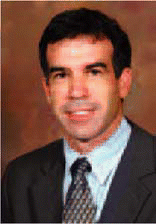In general, most would do septoplasty. Apnea is a manifestation of airway obstruction and increased resistance, said Dr. Woodson.
Explore This Issue
January 2007However, Dr. Terris said he wouldn’t necessarily treat it. I would probe the patient regarding their nasal symptoms, in particular congestion when they are supine. Many times, when they wake up they are congested. That would be enough for me to recommend surgery. If they deny any problems with their nose at all, I wouldn’t recommend treatment, he said.
Continuing with the classification system, Dr. Friedman said that with the palate, P0 would mean no treatment; P1 would entail minimal treatments such as RF, Pillar implant procedure, laser-assisted uvulopalatoplasty (LAUP), or uvulectomy. P2 would require UPPP. Tonsils would range from T0, no treatment; to T1, needing coblation; to T2, which would need tonsillectomy.
Clinical staging of the hypopharynx would range from the H0, no treatment level, to H1, needing minimal treatments such as RF, coblation, tongue base suspension, or use of oral appliances. H2 cases would take more aggressive treatments such as genioglossus advancement, thyroid suspension, or bimaxillary advancement.
When it comes to the patient’s BMI, B0 (meaning within a normal healthy range) would not need any treatment. Heavy patients would fall into a B1 category and should undergo weight loss, while B2 could mean a more aggressive approach such as bariatric surgery.
However, patients whose BMI is over 40 are not good candidates for upper airway surgery, Dr. Friedman said.
Pros and Cons of Pillar Implants
Panelists discussed Pillar implants, and agreed that it’s a procedure they don’t use frequently. Drs. Steward and Terris both said they use it occasionally in patients to help treat snoring.
Dr. Friedman described a recent study that showed subjective success rate of 60% reduction in snore levels, and an objective cure rate of 40%.
He suggested that Pillar implants can be used in combination with other procedures. Some evidence suggests that nasal surgery alone leads to a worsening of apnea-hypopnea index (AHI) in most patients, but if combined with Pillar implants there was a 40% success rate.
For patients without tonsils, Z-palatoplasty (ZPP) can be used. In a study where patients also received tongue base treatment, it led to almost as high a subjective success rate as UPPP, but a higher objective success level when compared to UPPP.
When it comes to problems in the nose, most resistance is due to problems in the nasal valve, according to Dr. Woodson. There are various procedures to expand the air space. In particular, the goal of palatopharyngoplasty with palatal advancement is to make the retropalatal space bigger.

Leave a Reply